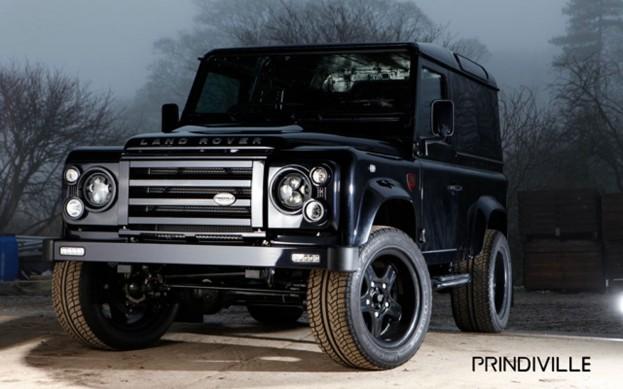 Sport-utility vehicles started out as basic work vehicles, but now they can have just as much snob appeal as a Lamborghini or Mercedes. The Land Rover Defender is a leftover from that earlier age, but that hasn’t stopped British builder Prindiville Design from making it into an exclusive status symbol.
Sport-utility vehicles started out as basic work vehicles, but now they can have just as much snob appeal as a Lamborghini or Mercedes. The Land Rover Defender is a leftover from that earlier age, but that hasn’t stopped British builder Prindiville Design from making it into an exclusive status symbol.
Prindiville views itself as the successor to coachbuilders of the 1920s and 1930s. Instead of putting custom bodies on Duesenbergs, it tunes exotic machinery from Aston Martin, Ferrari, and Lamborghini, among others. Looking to expand its portfolio, Prindiville is turning its attention to a completely different type of car.
The company recently announced that it would build 25 limited-edition trucks, based on the short-wheelbase Defender 90. “The Limited Edition Land Rover Defender is a truly unique proposition in that it offers a more refined, quiet, and comfortable environment comparable to that of high-end 4x4s,” said Alex Prindiville, Founder and Chief Designer of Prindiville Design.
That is a pretty tall order, considering the vehicle Prindiville is starting with. Before Land Rover made luxury SUVs like the Range Rover, it made basic, tough trucks. The Defender is still prized by hardcore off-road enthusiasts, and the British army, for its go-anywhere abilities. The Defender 90 is actually a commercial vehicle, with no rear seats or windows. According to Prindiville, the 90 was chosen for its two-seat layout (Lamborghinis only have two seats, after all).
The interior is anything but commercial-grade; it includes Italian leather-covered Cobra racing seats, and Alcantara carpets, all of which can be customized with a variety of colors. The Prindiville Defender also gets a few gadgets: a DVD player with a five-inch screen built into the dashboard, rear parking sensors and camera, Bluetooth, and Wi-Fi.
Under the hood, the stock 2.4-liter diesel inline four gets a few upgrades as well. The most aggressive package, Stage Four, adds a more powerful turbocharger and high-flow intercooler; all versions get a titanium sport exhaust system. The result is 190 hp and 339 lb-ft of torque; neither figure will threaten Porsche Cayenne drivers.
To distinguish its limited-edition Defender from lesser vehicles, Prindiville also tweaked the exterior. The most noticeable differences are LED lights, chrome running boards, and larger, 18-inch aluminum wheels.
The cost of all this custom work is around $81,500. In the best coachbuilding tradition, Prindiville will hand-assemble each car, although many of the mechanical upgrades will be performed by Alive Tuning.
That price seems a bit steep considering the Defender’s lack of performance; that kind of money will buy several, much faster SUVs. Then again, it’s also pretty ludicrous to expect a military workhorse like the Defender to be luxurious, let alone sporty. Traditional Defender fans will probably scoff at Prindiville’s upgrades, so it is unclear who is expected to buy this car. It definitely will not be anyone in the United States; the Defender is not sold here. Maybe Prindiville will whip up a custom Jeep Wrangler instead.
Editors' Recommendations
- Luxury cars continue to burn on abandoned cargo ship
- Land Rover Defender could become a life-size remote-control car
- Redesigned Land Rover Defender is positively teeming with new tech
- BlackBerry will provide cybersecurity for future Jaguar Land Rover vehicles
- Watch a Porsche Cayenne set a lap ‘record’ on an unfinished racetrack


